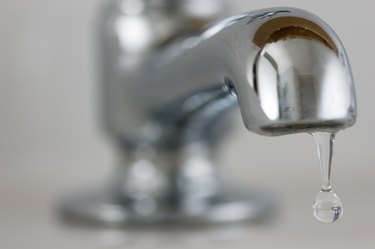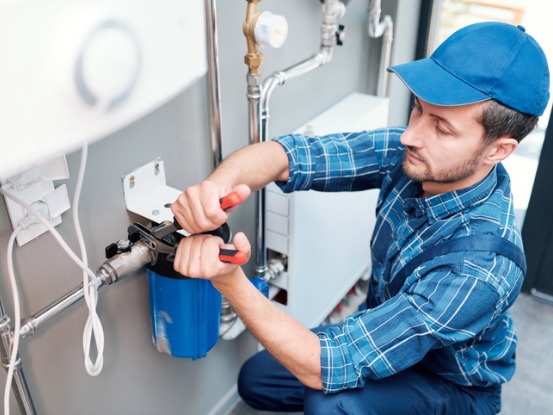The Ultimate Manual to Fixing Low Water Pressure in Your Home
The Ultimate Manual to Fixing Low Water Pressure in Your Home
Blog Article
They are making several great pointers regarding Dealing with Low Water Pressure in Your Home overall in this post followed below.

Low tide stress in your home can be a discouraging trouble, impacting everything from showering to cleaning recipes. If you're experiencing weak water circulation, there are a number of possible causes and services to check out. In this overview, we'll talk about typical reasons for low water pressure and practical steps to attend to the issue properly.
Introduction to Low Tide Pressure
Low water stress happens when the flow of water from your taps, showers, and various other fixtures is weak than common. This can make daily jobs much more difficult and less reliable. Recognizing the causes of low water stress is critical to discovering the best service.
Common Sources Of Low Water Pressure
Faulty Stress Regulatory Authorities
Pressure regulators are accountable for keeping regular water pressure in your house. If they malfunction, it can cause low tide stress or uneven flow throughout the house.
Metropolitan Supply Of Water Issues
In some cases, the trouble lies outside your home. Municipal supply of water issues, such as main line leakages or upkeep work, can briefly lower water stress in your area.
Pipe Obstructions
Over time, pipelines can become blocked with natural resource, sediment, or debris, restricting the flow of water. This is an usual concern in older homes with galvanized steel pipelines.
Deterioration
Deterioration within pipelines can cause leakages and lowered water pressure. Corrosion buildup can constrict water flow, specifically in maturing plumbing systems.
Just How to Detect Low Tide Stress
Checking Pipelines
Examine noticeable pipelines for signs of leakages, corrosion, or blockages. Take notice of any kind of uncommon audios, such as knocking or rattling pipelines, which can indicate issues within the plumbing system.
Consulting with a Plumber
If you're not able to identify the reason for low tide stress, consider employing a specialist plumber to carry out a thorough inspection. They can identify underlying concerns and suggest proper options.
Examining Taps and Fixtures
Begin by examining the water pressure at various faucets and components throughout your home. If the problem is separated to certain locations, it might suggest local problems.
DIY Solutions to Fix Low Tide Pressure
Flushing Hot Water Heater
Debris accumulation in the hot water heater can limit flow and lower effectiveness. Flushing the tank periodically helps get rid of debris and keep ideal performance.
Checking Pressure Regulatory Authority
Make sure that the pressure regulatory authority is working appropriately. Changing or changing the regulatory authority can help restore proper water pressure throughout your home.
Cleansing Aerators and Showerheads
Mineral deposits can collect in aerators and showerheads, minimizing water circulation. Get rid of and clean up these components regularly to improve water pressure.
Clearing Up Clogs in Pipeline
For small obstructions, try utilizing a plumbing snake or chemical drainpipe cleaner to clear obstructions in pipes. Be cautious when making use of chemicals and adhere to security guidelines.
When to Call an Expert Plumber
If do it yourself efforts stop working to solve the concern or if you presume considerable plumbing troubles, it's finest to seek aid from a certified plumber. They have the know-how and tools to resolve complicated issues safely and successfully.
Safety Nets to Maintain Water Stress
Installing a Pressure Booster
Consider installing a stress booster pump to improve water stress in locations with continually low circulation. This can be specifically advantageous for multi-story homes or properties with high-demand fixtures.
Surveillance Water Usage
Bear in mind water usage behaviors and prevent ill-using the plumbing system. Straightforward adjustments, such as staggering showers and washing tons, can help preserve appropriate water stress.
Normal Upkeep
Arrange routine maintenance for your plumbing system to prevent problems such as deterioration, leakages, and clogs. Addressing minor troubles early can aid avoid even more significant repairs later.
Verdict
Dealing with low water pressure can be discouraging, yet identifying the underlying causes and carrying out appropriate options can recover ideal circulation throughout your home. Whether it's cleaning up aerators, examining pipelines, or talking to a plumber, taking aggressive actions can make sure a consistent supply of water for your everyday demands.
How to Fix Low Water Pressure In Your Home
Municipal Water Supply Issues
Scheduled maintenance, high demand, and water main breaks are all potential causes for low water pressure within a city or county’s water lines. While there’s not much you can do to personally fix a problem with your city or county’s water supply system, you can play a big role in documenting the issue and alerting those who can.
How to fix it:
Ask your neighbors if they are experiencing any issues with low water pressure. If multiple homes are affected, it’s likely related to the city’s water line. Contact the local Water Authority to see if there is any maintenance taking place that might be affecting your supply. Also let them know of your specific issues. If other homeowners report the same issues, they’ll know that there could be a larger issue to look into. Faulty Fixtures
A damaged or clogged shower head, faucet or appliance is the first thing we’d suggest checking, especially if low water pressure appears to be isolated to a specific area of your home.
How to fix it:
First, turn off the main water supply to your home. Check the affected appliances for build-up or debris. In the case of a faucet, you can simply unscrew the aerator at the tip of the faucet. Showerheads should be fully detached from the water pipe. While the appliances are detached, you may want to check the water supply to determine if the fixtures were in fact the issue. To clean, soak the showerhead or aerator in vinegar and brush off any visible debris. Reattach the fixtures and check the water pressure again. If it is still low, there is likely a deeper issue at hand, which can be determined by a professional plumber. Pipe Obstructions
Mineral deposits, rust or other debris within water pipes can lead to blockages or corrosion over time.
How to fix it:
When you think of a clog, you probably think of a drain clog. While there are many DIY solutions to clearing a drain, clogs in a water pipe will almost always require the help of a professional plumber. A plumber will be able to locate the affected pipe and clean out any debris or mineral deposit buildup. In severe cases, the pipe may need to be replaced. Your plumber might also recommend a water softening system to remove the minerals from your home’s water supply that can contribute to pipe blockages over time.
Plumbing Leak
Undetected water line leaks can divert water away from your residential pipes, reducing the water pressure in your fixtures.
How to fix it:
Check your water meter by turning off all water sources and monitoring the meter for any movement, which could be a clear indicator of a potential leak. Check all visible pipes for signs of leaking, including water stains, active dripping or damp spots around the pipe. Inspect fixtures, including faucets and showerheads, for any drips. Test the pressure but recording the pressure with the main water valve shut off. Leave off for a few hours and test again. A significant drop in pressure is a clear sign of a leak. https://kiddcoplumbing.com/plumbing-blog/how-to-fix-low-water-pressure/

Hopefully you enjoyed our article on 4 Ways to Troubleshoot Low Water Pressure. Thanks for taking the time to read through our article post. Do you know someone else who is very much interested in the topic? Why not share it. Many thanks for being here. Kindly check our blog back soon.
Hire A Pro Report this page